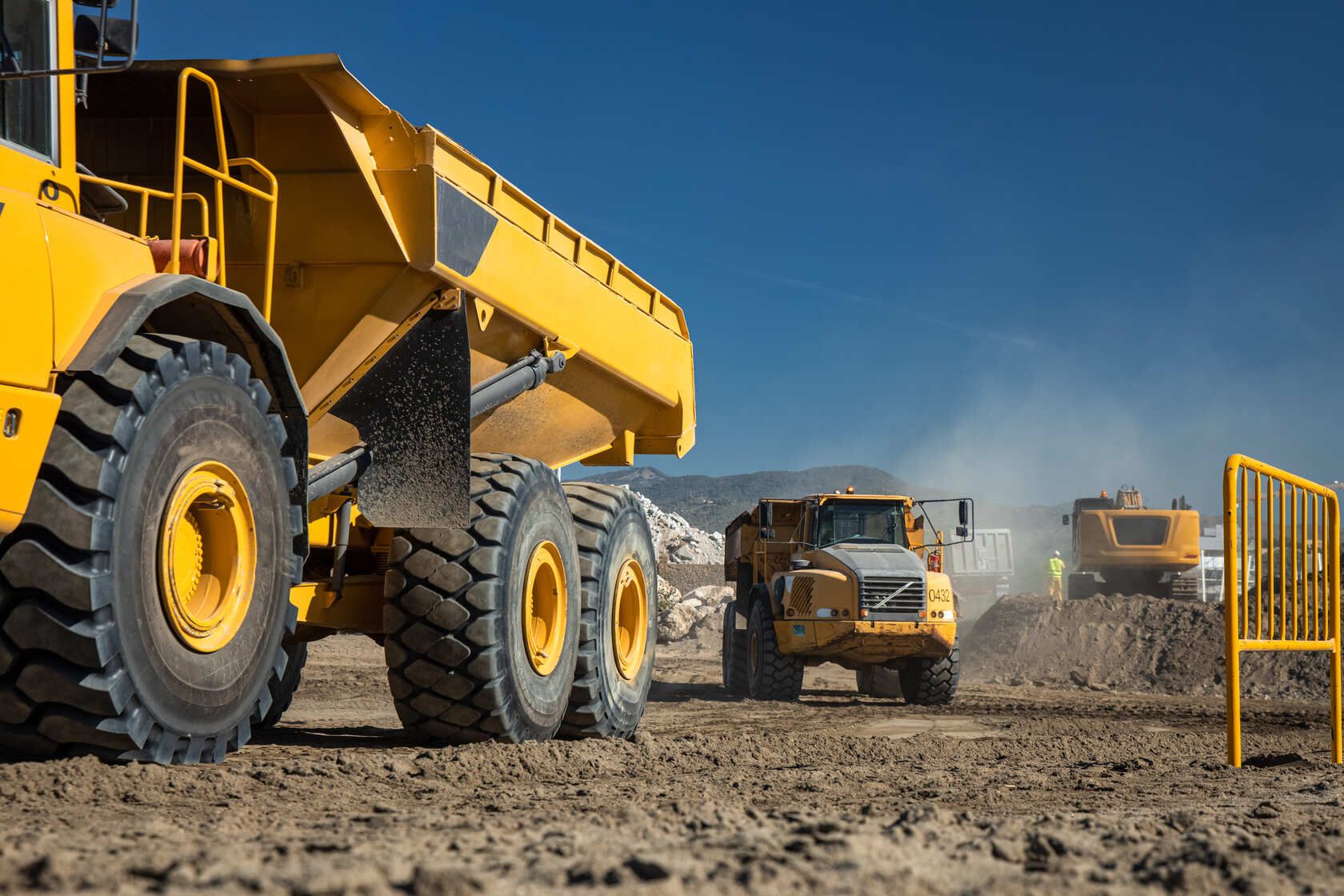What Is The Difference Between Car & Truck Radiator Repairs?
The radiator is a car part that many drivers do not think about until it fails. The radiator regulates the engine temperature by transferring heat away from the engine via coolant. A broken or failed radiator can cause your engine to overheat, which can lead to serious damage.
In this article, we will explore the differences between car and truck radiators. We will cover the different types of radiators used in each vehicle, as well as common radiator repair methods. Let’s take a look!
Cars Engines vs Trucks Engines
How Does A Car Engine Work?
The engine is the heart of your car, and it needs to be in good working condition to keep your car running smoothly. The engine produces heat as it runs, and the radiator helps to keep the engine from overheating by transferring this heat away from the engine.
How Does A Truck Engine Work?
Trucks are heavier and have more power than cars, so their engines produce more heat. The truck radiator is larger to help dissipate this heat away from the engine.
What happens if the radiator acts up?
When it comes to radiator repair, there are some key differences between cars and trucks. In general, car radiators are less complex than truck radiators. This is because trucks typically have larger engines that produce more heat. As a result, truck radiators must be able to dissipate more heat than car radiators.
What Do Radiators Do?
Radiators are responsible for cooling the engine by transferring heat away from the engine via coolant. The coolant is circulated through the engine by the water pump. As the coolant circulates, it absorbs heat from the engine. The hot coolant then flows through the radiator, where it is cooled by the air passing through the radiator.
Types Of Radiators
There are two main types of radiators: crossflow and downflow. Crossflow radiators are typically found in cars, while downflow radiators are usually found in trucks. Crossflow radiators are more efficient at cooling the engine because they have a larger surface area for the coolant to flow through. Downflow radiators are less efficient but are better at withstanding the vibration and stress that comes from driving on rough roads.
How Does A Crossflow Radiator Work?
A crossflow radiator is designed so that the coolant flows horizontally across the radiator. This design allows for a larger surface area, which means that more heat can be dissipated. Crossflow radiators are typically more efficient than downflow radiators.
How Does A Downflow Radiator Work?
A downflow radiator is designed so that the coolant flows vertically down through the radiator. This design is less efficient than a crossflow radiator, but it is better at withstanding the vibration and stress that comes from driving on rough roads.
What Are The Different Types Of Truck Radiators?
There are two main types of truck radiators: low-flow and bolt-on. Low-flow radiators are designed for use with engines that produce less heat. Bolt-on radiators are designed for use with engines that produce more heat.
How Does A Low-Flow Radiator Work?
A low-flow radiator is designed so that the coolant flows at a lower rate. This allows for a more efficient heat transfer and helps to prevent the engine from overheating.
How Does A Bolt-On Radiator Work?
A bolt-on radiator is designed to be bolted onto the engine. This design helps to dissipate the heat generated by the engine more effectively.
Radiator Repairs
When it comes to radiator repair, there are some key differences between cars and trucks. In general, car radiators are less complex than truck radiators. This is because trucks typically have larger engines that produce more heat. As a result, truck radiators must be able to dissipate more heat than car radiators.
Car Radiator Repairs
Car radiator repairs are typically less complex than truck radiator repairs. This is because car radiators are less likely to fail and are easier to repair. Car radiator repairs usually involve replacing the coolant and/or the water pump.
Truck Radiator Repairs
Truck radiator repairs are typically more complex than car radiator repairs. This is because truck radiators are more likely to fail and are more difficult to repair. Truck radiator repairs usually involve replacing the radiator, the coolant, and/or the water pump.
Radiator Repair Process
The radiator repair process typically involves replacing the coolant and/or the water pump. In some cases, the entire radiator may need to be replaced. The steps involved in the radiator repair process are as follows:
- Remove the old coolant from the radiator.
- Flush the radiator with clean water.
- Install new coolant in the radiator.
- Refill the radiator with coolant.
- Bleed the radiator to remove any air bubbles.
- Test the radiator to ensure that it is working properly.
Radiator Replacement Process
The radiator replacement process typically involves removing the old radiator and installing a new one. The steps involved in the radiator replacement process are as follows:
- Remove the old radiator from the vehicle.
- Install the new radiator in the vehicle.
- Refill the radiator with coolant.
- Bleed the radiator to remove any air bubbles.
- Test the radiator to ensure that it is working properly.
Radiator Maintenance
Radiator maintenance is important for both cars and trucks. Radiator maintenance helps to keep the radiator clean and free of debris. Radiator maintenance also helps to prevent the radiator from leaking.
Car Radiator Maintenance
Car radiator maintenance typically involves flushing the radiator and refilling it with coolant. In some cases, the entire radiator may need to be replaced.
Truck Radiator Maintenance
Truck radiator maintenance typically involves flushing the radiator, refilling it with coolant, and bleeding the radiator. In some cases, the entire radiator may need to be replaced.
Sign To Look Out For Before Radiator Repair Is Needed
There are some signs to look out for that indicate that radiator repair may be needed. These signs include:
The engine is overheating frequently
The first sign that radiator repair may be needed is if the engine is frequently overheating. If the engine is overheating, it means that the coolant is not flowing properly and/or the radiator is not dissipating heat effectively.
The coolant level is low
Another sign that radiator repair may be needed is if the coolant level is low. This can be due to a leak in the radiator or a problem with the water pump.
There is steam coming from under the hood
Another sign that radiator repair may be needed is if there is steam coming from under the hood. This indicates that the engine is overheating and that the coolant is not flowing properly.
The radiator fans are not working properly
Another sign that radiator repair may be needed is if the radiator fans are not working properly. Radiator fans help to dissipate heat from the radiator. If they are not working properly, it can cause the engine to overheat.
If you notice any of these signs, it is important to take your vehicle to a mechanic or a radiator specialist for diagnosis and repairs. Ignoring these signs can result in further damage to your vehicle and may even lead to engine failure.
FAQs
Here are some frequently asked questions about radiator repair:
Q: How often should I have my radiator checked?
A: It is generally recommended to have your radiator checked every 50,000 kilometres. However, if you notice any of the signs that indicate radiator repair may be needed, it is important to take your vehicle to a mechanic or a radiator specialist for diagnosis and repairs.
Q: How much does radiator repair cost?
A: The cost of radiator repair varies depending on the extent of the damage and the type of vehicle. In general, car radiator repairs are less expensive than truck radiator repairs.
Q: How can I prevent my radiator from needing repairs?
A: The best way to prevent your radiator from needing repairs is to have it checked regularly and to make sure that the coolant level is always full. Additionally, if you notice any of the signs that indicate radiator repair may be needed, it is important to take your vehicle to a mechanic or a radiator specialist for diagnosis and repairs.
Q: What are the consequences of ignoring radiator repair?
A: The consequences of ignoring radiator repair can be serious. Ignoring these signs can result in further damage to your vehicle and may even lead to engine failure.
There You Have It
Radiators are an important part of both cars and trucks, and they need to be in good working condition to prevent engine damage from overheating. Car radiators are typically less expensive to repair than truck radiators, but both types of repairs typically involve replacing the radiator cap, thermostat, and coolant hoses.
In some cases, the entire radiator may need to be replaced. Truck radiators may also require additional repairs, such as replacing the fan or fan clutch. These repairs can be more expensive than car radiator repairs, but they are typically necessary to keep the truck engine from overheating.
For all your cooling and heating transfer needs, Applied Radiators can do it all. Contact us today for more information on our radiator maintenance and radiator replacement services.




